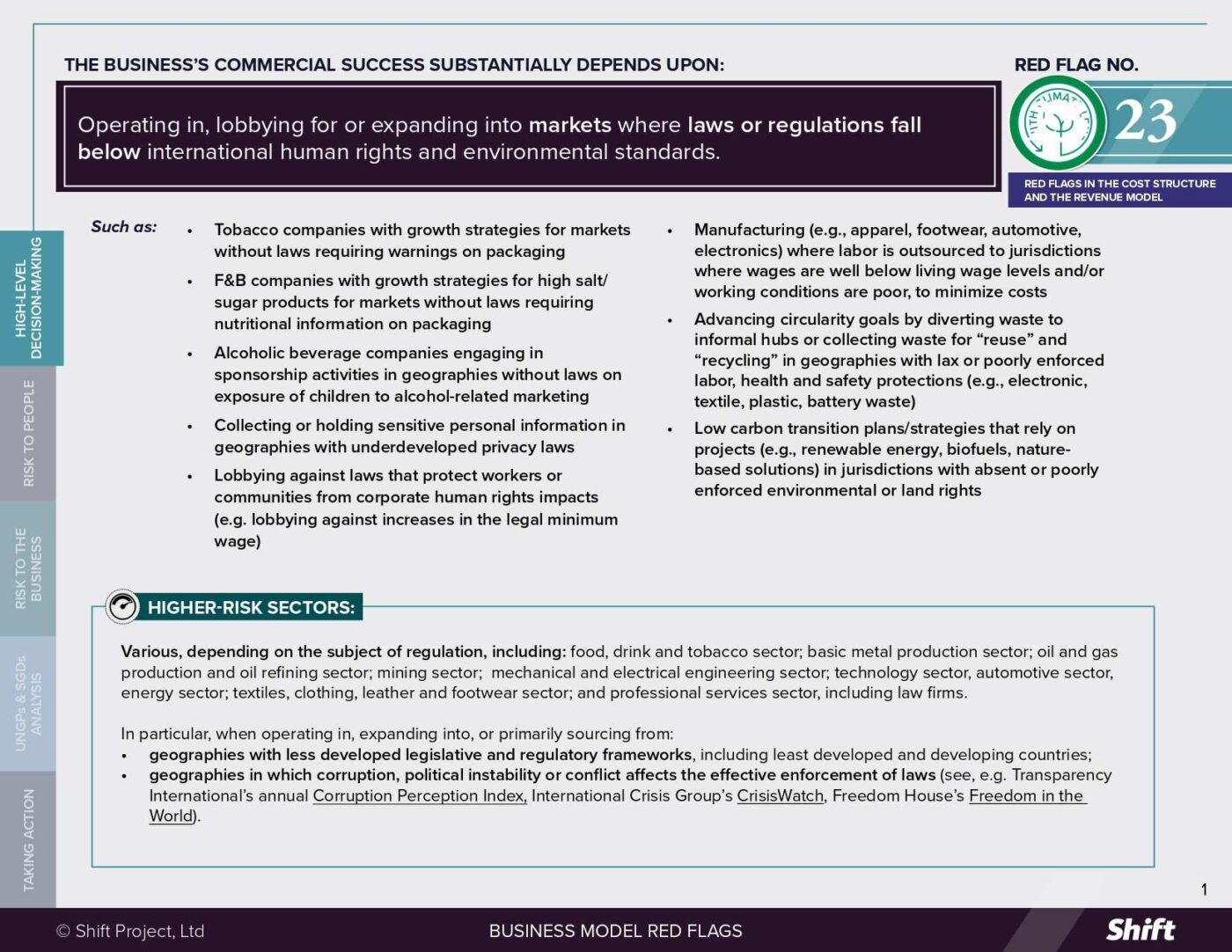The Seven Steps to Designing Effective Indicators
There are seven steps in the process of using the tool. They guide users from Articulating the Strategy to Accounting for Contextual Factors and, ultimately, to Developing Targets and Indicators. All of these steps should be supported by engagement with internal and external stakeholders.
How to use this resource
The seven steps of the Indicator Design process are divided into three parts. You can download each part individually by selecting it from the graphic below. You can also download the entire series by choosing ‘Download all guidance’. Some parts reference templates that you will need to fill out as you go through the design process. You can download the templates from the corresponding button below.
Part One
1
ARTICULATE the intended human rights outcomes for people.
2
ARTICULATE whose behaviors you are targeting and what you want them to do.
3
ARTICULATE related activities, outputs, inputs, and outcomes for business.
Part Two
4
MAP contextual factors – risks, dependencies, and assumptions.
5
SET OUT how you do, or will, address these contextual factors.
Part Three
6
ESTABLISH outcome targets to build momentum and accountability.
7
DESIGN a holistic set of Indicators to measure progress and impact.
NOTE:
It is advisable that a company has a good initial understanding of the specific human rights risk that it wants to focus on when using the tool. This means that the company will have already identified human rights risks, prioritized which to put greatest resources into tackling first, based on their severity, and is now looking at the interventions to tackle one or more of those priorities. Click here to learn more about the identification and prioritization of human rights risks.

 Business Model Red Flags
Business Model Red Flags  Tool for Indicator Design
Tool for Indicator Design 






